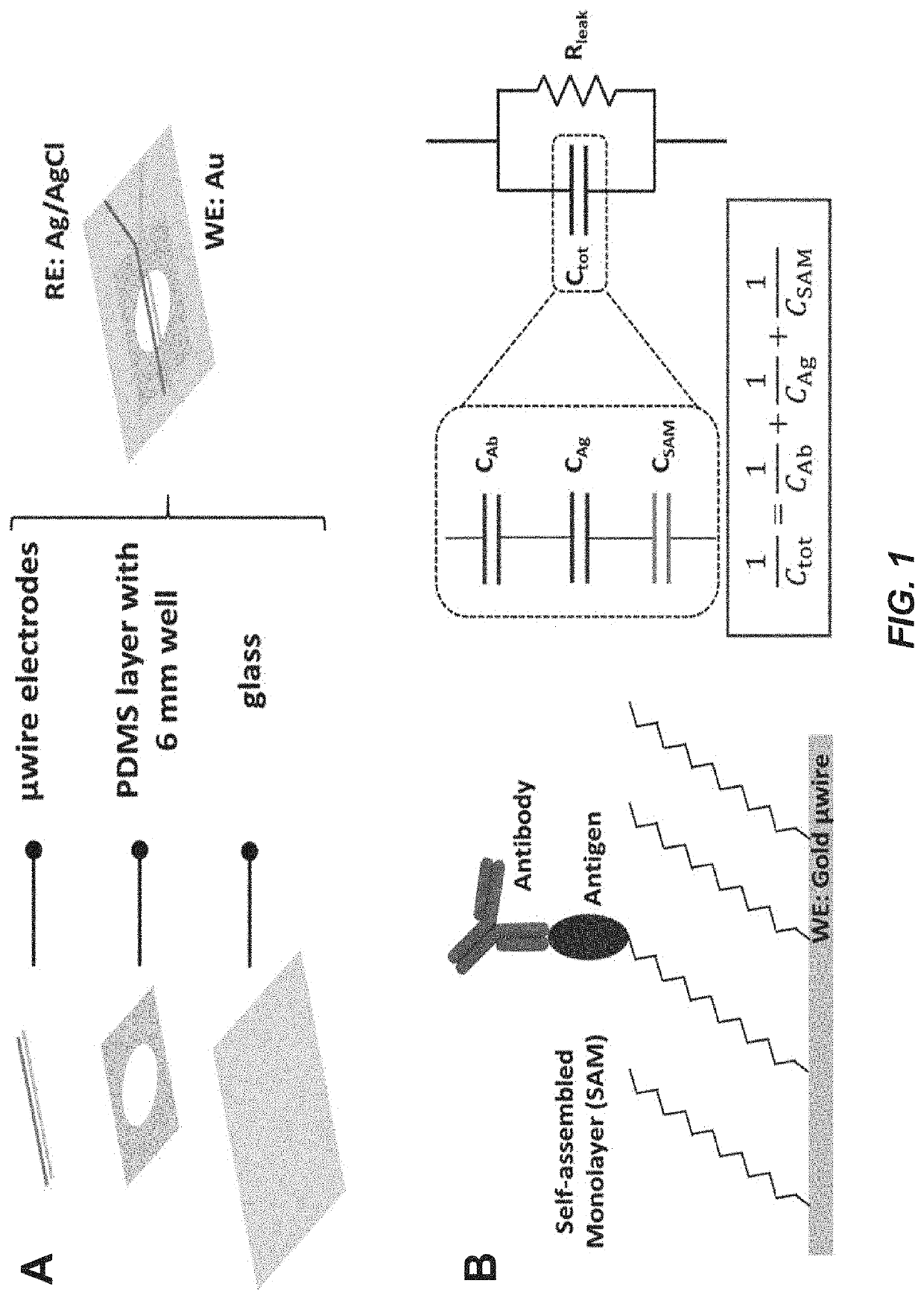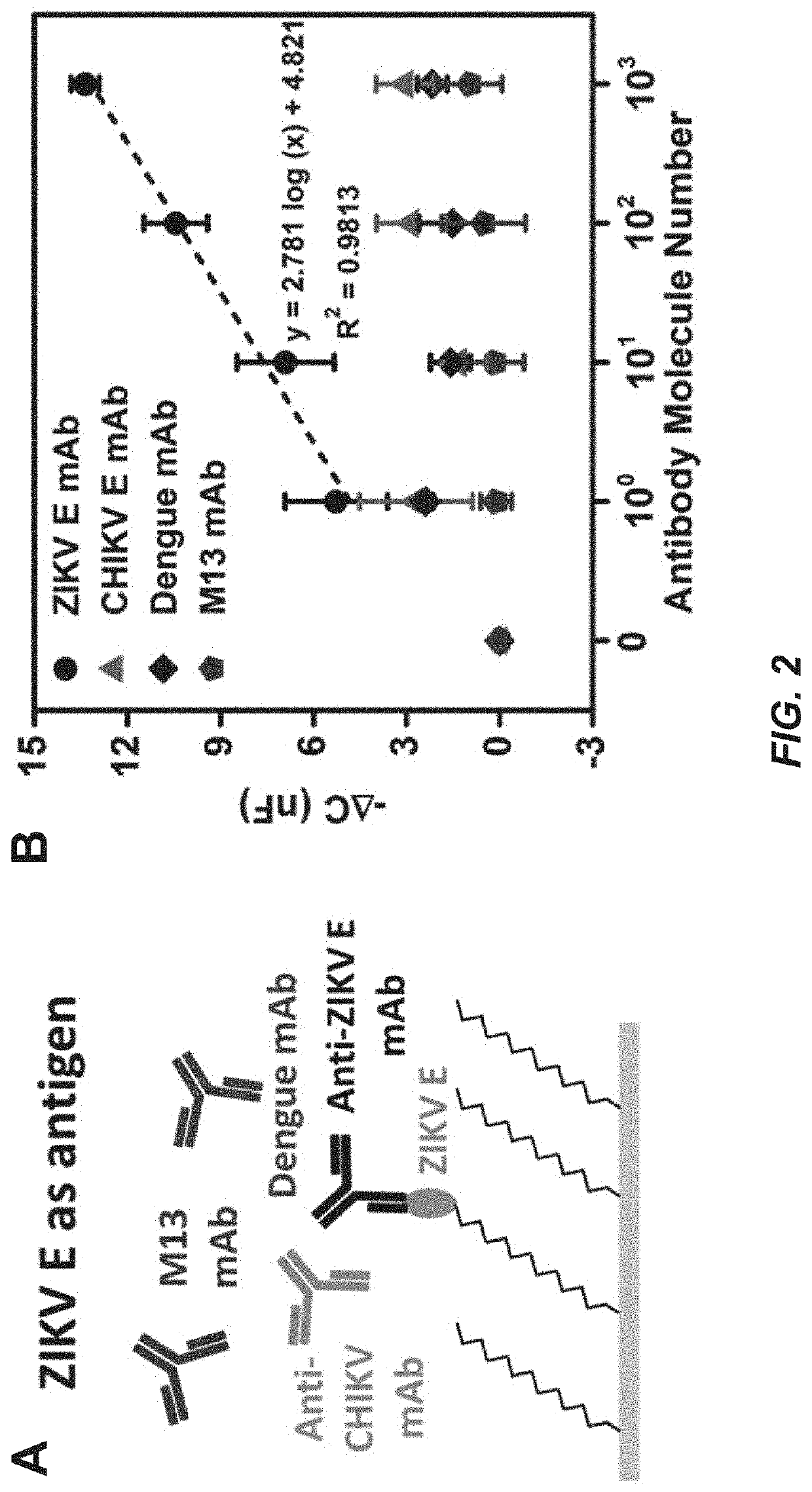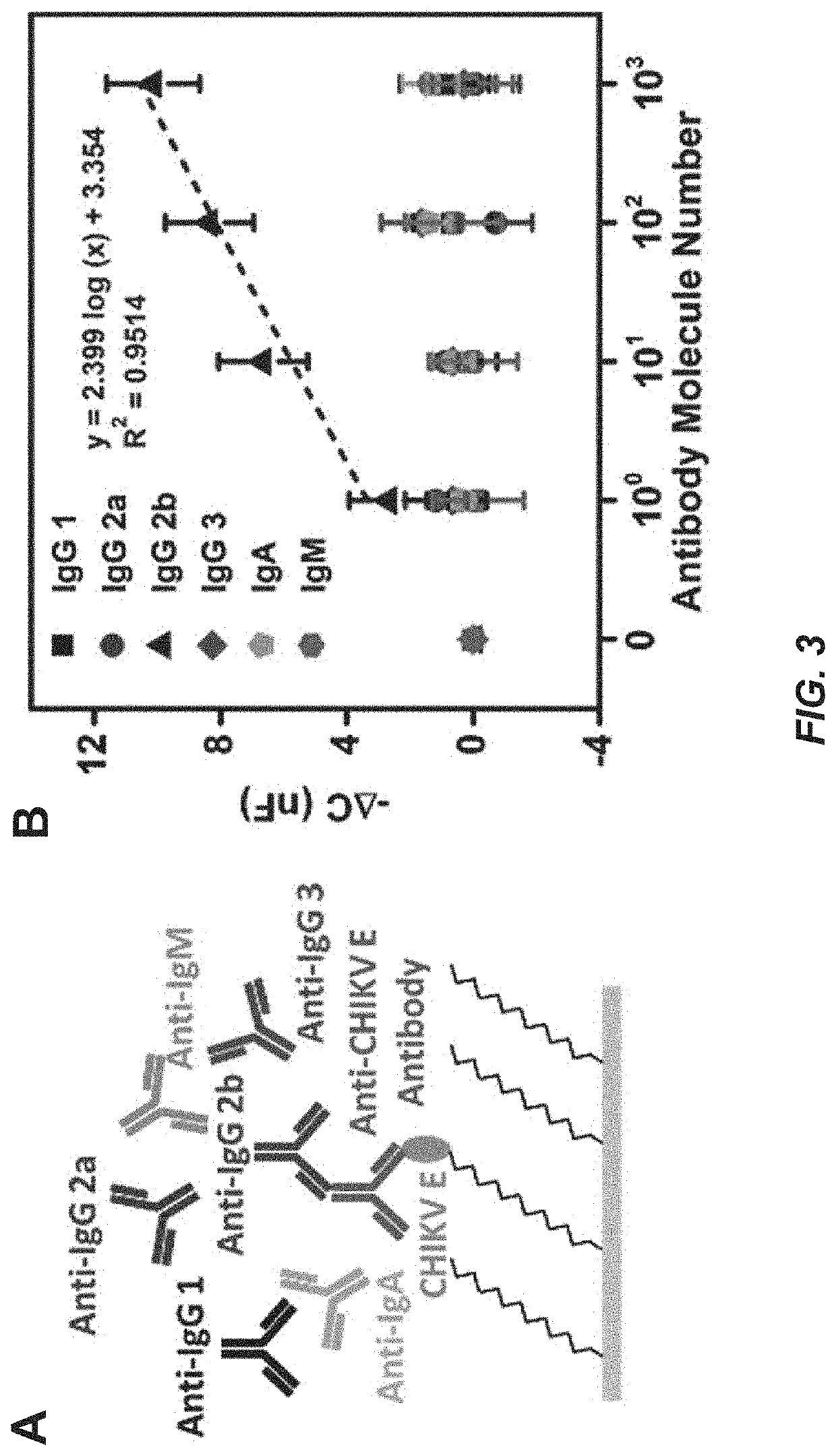Capacitive micro-sensor for pathogen-specific antibody responses
a micro-sensor and antibody technology, applied in the field of capacitive micro-sensors for pathogen-specific antibody responses, can solve the problems of limiting the utility of elisas in low-resource settings, demonstrating interference from matrix components of unprocessed samples, and increasing complexity and cost, so as to achieve superior sensitivity and specificity, reduce cross-reactivity, and reduce the effect of cos
- Summary
- Abstract
- Description
- Claims
- Application Information
AI Technical Summary
Benefits of technology
Problems solved by technology
Method used
Image
Examples
example 1
and Methods
[0108]Study Design.
[0109]The working microwire surface was functionalized with E protein from either ZIKV (ZIKV E) or Chikungunya virus (CHIKV E). Lower dynamic range boundaries for the device were first determined with monoclonal antibody samples. Anti-ZIKV E antibody was employed as a specific target while anti-CHIKV E, anti-Dengue, and anti-M13 were used as nonspecific targets. The microwire biosensor was also used to isotype the monoclonal antibodies with anti-mouse IgG1, IgG2a, IgG2b, IgG3, IgA and IgM antibodies. The microwire sensor was then validated using pre-immune and immune mouse sera collected 4, 7, 14 and 21 days post-ZIKV immunization. Next, the sensor was used to isotype Day 4 and 21 mouse sera for IgM and IgG.
[0110]Information for immunization and sera characterization, electrode functionalization and sensor fabrication are described in the Examples. Representative serum samples positive for ZIKV IgG antibody by Western blot were included in the serum tes...
example 2
Functionalization and Sensor Fabrication
[0120]A 25 μm diameter Au microwire was used as the working electrode. To prepare the electrode surface, the Au microwire was immersed in a 20 mL solution of 50 mM KOH and 25% H2O2 for 10 min, and thoroughly rinsed in Milli-Q water to remove residual reagent. This widely used cleaning protocol removes debris that interferes with the stability of immobilized surface structures. The Au microwire was then plasma cleaned for 2 min in an 02 Plasma Etch PE-25 (Plasma Etch, Carson City, Nev., USA) at a pressure of 200 mTorr and with 150 W applied to the RF coil. A self-assembling monolayer (SAM) formation reaction was performed immediately after plasma cleaning which spontaneously forms an organized structure at the surface. Some SAM-forming molecules do not bind strongly to their substrate, like perylenetetracarboxylic dianhydride (PTCDA) on gold, and the resultant structures have poor stability. However, other molecules with stronger affinity such ...
example 3
on of Plasmids for Zika DNA Immunization
[0125]Genes for the Zika virus PRVABC59 strain (NCBI Accession: KX087101) capsid and prM-Env proteins were codon-optimized for mammalian expression and synthesized by Genescript Inc. The V5 epitope tagged capsid gene was cloned into the EcoRV site of pcDNA3.1 (plasmid pBG610), and a Japanese encephalitis virus prM signal sequence was added to the prM-Env gene and the construct was cloned into the EcoRV site of pcDNA3.1 (pBG611) as previous described (Virology 2006, 346, 53). Plasmid sequences will be provided upon request. Expression of capsid and prME proteins after transfection into Vero cells was verified by Western blot analysis using anti-V5 (Life Tech) and anti-Envelope (4G2 (ATCC HB-112 (D1-4G2-4-15))) antibodies, respectively.
[0126]DNA was prepared for immunization using the TempliPhi Rolling Circle Amplification Kit (GE HealthCare) according to the manufacturer's instructions. DNA was purified by phenol:chloroform extraction and ethan...
PUM
| Property | Measurement | Unit |
|---|---|---|
| mole percent | aaaaa | aaaaa |
| diameters | aaaaa | aaaaa |
| diameters | aaaaa | aaaaa |
Abstract
Description
Claims
Application Information
 Login to View More
Login to View More - R&D
- Intellectual Property
- Life Sciences
- Materials
- Tech Scout
- Unparalleled Data Quality
- Higher Quality Content
- 60% Fewer Hallucinations
Browse by: Latest US Patents, China's latest patents, Technical Efficacy Thesaurus, Application Domain, Technology Topic, Popular Technical Reports.
© 2025 PatSnap. All rights reserved.Legal|Privacy policy|Modern Slavery Act Transparency Statement|Sitemap|About US| Contact US: help@patsnap.com



